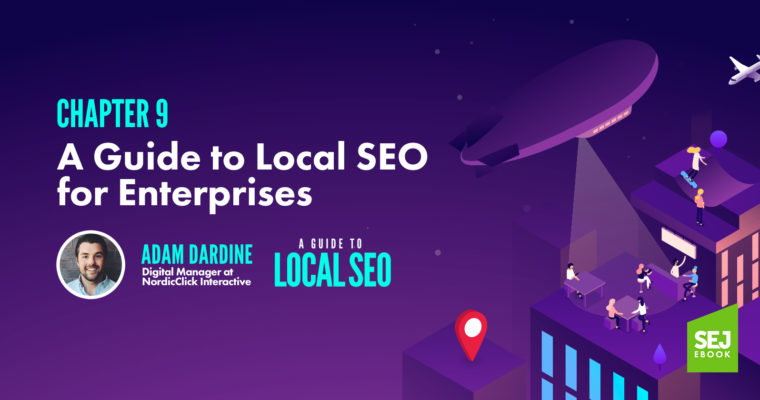
 ‘ );
‘ );
h3_html = ‘
‘+cat_head_params.sponsor.headline+’
‘;
cta = ‘‘+cat_head_params.cta_text.text+’→‘
atext = ‘
‘+cat_head_params.sponsor_text+’
‘;
scdetails = scheader.getElementsByClassName( ‘scdetails’ );
sappendHtml( scdetails[0], h3_html );
sappendHtml( scdetails[0], atext );
sappendHtml( scdetails[0], cta );
// logo
sappendHtml( scheader, ” );
sc_logo = scheader.getElementsByClassName( ‘sc-logo’ );
logo_html = ”;
sappendHtml( sc_logo[0], logo_html );
sappendHtml( scheader, ” );
if(“undefined”!=typeof __gaTracker){
__gaTracker(‘create’, ‘UA-1465708-12’, ‘auto’, ‘tkTracker’);
__gaTracker(‘tkTracker.set’, ‘dimension1’, window.location.href );
__gaTracker(‘tkTracker.set’, ‘dimension2’, ‘local-search’ );
__gaTracker(‘tkTracker.set’, ‘contentGroup1’, ‘local-search’ );
__gaTracker(‘tkTracker.send’, { ‘hitType’: ‘pageview’, ‘page’: cat_head_params.logo_url, ‘title’: cat_head_params.sponsor.headline, ‘sessionControl’: ‘start’ });
slinks = scheader.getElementsByTagName( “a” );
sadd_event( slinks, ‘click’, spons_track );
}
} // endif cat_head_params.sponsor_logo
If digital marketing channels were items on a grocery checklist, paid search and traditional SEO would be the meat and potatoes.
Local SEO, unfortunately, is too often the afterthought food that many “shoppers” at large enterprises forget to purchase.
With the continued rise in mobile, local SEO is more important than ever because the two are synonyms.
A recent study from Stone Temple states that 63 percent of all Google searches are mobile.
Why do enterprises view local SEO as a grocery checklist?
In short, local SEO fails when businesses lack a well-structured plan.
Common misconceptions include, “If I complete A, B, and C, then my local presence will improve” or “If we’re doing traditional SEO, local will fall into place.”
Wrong.
In order for local SEO to succeed, businesses must define what success looks like and develop and an ongoing plan that is scalable.
While businesses of any size can fall susceptible to the “grocery checklist” mentality, it’s the large enterprise businesses that have the greatest risk of catching the disease.
Local SEO Pros Cons of Large Enterprise
Regardless of channel, large businesses have built-in advantages over small competitors including but not limited to:
- Money.
- People.
- Access to industry tools.
- Specialization.
While these built-in resources certainly help, if ignored, the cons of larger companies with over 100 locations will outweigh the pros – especially with respect to local SEO.
4 Obstacles Large Enterprises Face When Planning a Local SEO Strategy
1. Ignorance Is Bliss
If there’s never been a defined strategy across the organization, it may be difficult to earn buy-in from others.
2. Slow Decision Making
Large enterprises are generally not as adaptive and flexible as small companies.
Consequently, tasks that should be no-brainers, like claiming local listings, can draw out for months.
I’ve seen business regret not having urgency with regard to claiming listings. Something as simple as changing phone numbers can result in local traffic falling off the map due to data inconsistencies.
In drastic cases, unclaimed and outdated listings have caused Google My Business traffic to plummet by more than 50 percent.
3. ‘Bystander Effect’
Lack of defined roles coupled with the fact that the enterprise has many people on the marketing team will lead to the diffusion of responsibility and a lot of finger pointing.
A common local task that falls victim to the “Bystander Effect” is review management.
Who should be responsible for responding? Customer service? Store managers? Regional managers?
The truth is, there is no right answer – pick one but make sure the job gets done. And make responsibilities clear.
4. Volume
Volume is arguably the biggest obstacle to overcome.
Let’s use the new Google QA feature as an example: 100 locations x 3 questions/month x 5 minutes per response = 25 hours/month. And that’s a conservative estimate that only accounts for one small component of local SEO.
The good news is that a well-defined plan not only overcomes the obstacles listed above, but produces a successful and scalable local SEO strategy.
Before we expand on actionable local SEO plans, it’s important to point out often overlooked first steps:
- Obligatory Digital Marketing Goals: Define what success means for local SEO. Common objectives include increases in:
- Foot traffic.
- Views of store locator pages.
- Clicks on Google My Business Listings.
- Phone calls made to the store.
- Establish Roles and Responsibilities: Just like any other team effort, local SEO requires a team. To use a sports analogy, Aaron Rodgers needs his offensive line to follow through on their assignments just as much as a local SEO provider needs store managers to provide an above average customer experience.
5 Local SEO Practices for Enterprises
Below are five local SEO practices that will help you reach your business goals. Each section has been broken into:
- Basic Practices: (In most cases, these should be implemented, but thought of as more of a baseline. In some sections, the baseline doesn’t exist, so I’ve listed what not to do, instead.) Essentially, some enterprises do the basics and either think they’re done or choose to stick their head in the sand (See Local Link Building, Review Management, and Citation Management in the steps outlined below for examples).
- Competitive Edge Practices: These will separate your business from competition – if for no other reason than most stick with the basic approach!
1. On-Page Local SEO
Basic Practices
- Include city and state in the title tag of all store locator pages.
- Ensure store pages are indexed by search engines and display prominent clickable mobile elements like phone numbers.
- Implement local Schema markup on all store locator pages.
Competitive Edge Practices That Require Ongoing Management Planning
- Create and implement a plan for local content opportunities – these can be incorporated on a blog or directly on store locator pages to help differentiate hundreds of similar store pages.
- For example, if you manage a store that sells baseball hats in Minnesota, create a blog post about a new hat collection and talk about how it can help shade the sun while you’re out enjoying all 10,000 of the state’s beautiful lakes during the short summer. That said, the content doesn’t necessarily even have to be about the products you sell. In fact, focus most content around anything but selling your product. Make it about something that’s useful and helpful to your customer/audience.
- Take a disciplined and consistent approach to adding new content to your store pages. Content ideas include unique store photos, videos, store manager profiles, or other local city information that is related to your business.
Dick’s Sporting Goods does an excellent job of creating unique store pages by adding short localized paragraphs to each location.
2. Google My Business
Basic Practices
- Create and submit a Google My Business listing.
- Update NAP (Name, Address, Phone) for all stores.
- Upload a storefront image for all locations.
- Select two to three relevant business categories within your profile.
Competitive Edge Practices That Require Ongoing Management Planning
- Enlist in a tool like Get Five Stars or Moz Local. These tools have enterprise-friendly features that enable managers to receive notifications whenever a user leaves a review, among many other local management features. Next, create a few generalized templates that service reps can reference when responding to customer feedback.
- Create a monthly calendar to use optional but helpful features like Google Posts and Google QA. Establish guidelines for how often Google Posts are used.
- Change store hours to reflect store closings and special holiday hours. Google My Business allows managers the option to bulk upload store hour changes.
- Establish a culture that consistently analyzes the competitive landscape in the local pack. Regularly check local rankings for important keywords using tools like MobileMoxie or Bright Local Competitive Analysis. These tools are great because they allow you to check local rankings without searching a location modifier (e.g., sushi restaurants in Austin).
- Report spam on Google Maps. Be a tattletale on others that are spamming GMB. Common culprits are keyword stuffing or adding location directly in the name of the business.
- Append unique UTMs to your local directories, GMB included, and analyze traffic directly in Google Analytics. Although GMB provides data directly in the interface, I find it useful to have the data included in GA reports. I use utm?source=localutm_medium=organicutm_campaign=store-name
3. Local Link Building
Basic Practices
- Don’t ignore local link building because of the sheer volume of locations or for fears of having limited impact. Many large enterprises make this mistake.
Competitive Edge Practices That Require Ongoing Management Planning
- Large brands are involved in the community but fail to maximize their involvement from a linking perspective. Take inventory of all PR events and set up an outreach process to make sure you receive a link back. Local link building has no checklist. Get involved in your community. Sponsor events. Support other businesses. Host networking events. Most beneficiaries will gladly link back to your local branch store page, some just need a reminder.
- If you’re really stuck on where to start, here are a few inspirational ideas from Whitespark – Brainstorm Sponsorship Opportunities.
- Brands think too big. Local SEO is, well, it’s local! It’s small. Don’t get bogged down thinking nationally and overwhelmed by the crazy number of locations you manage. Start small and gradually build out a process for other locations. Better yet, once you experience success in a local market, let that local manager become your internal advocate.
4. Citation Management
Basic Practices
- Create a Google My Business profile.
- Many enterprises submit store citations using an automated tool but utilize the “set-it-and-forget-it plan”. (I recommend automated citation tools, but it’s not a “set and forget” checklist item.).
Competitive Edge Practices That Require Ongoing Management Planning
- Use Yext or Moz Local to create, verify, and optimize listings for multi-location brands. These are scalable tools perfect for businesses with over 100 stores. They help push citations, clean up duplicate data, adjust incorrect data, and defend online presence.
- Assign designated resources to actively monitor and update information. Always look to improve the listings. Problems will undoubtedly occur, and you want someone to be able to make the appropriate brand decisions when they come across questionable content.
- Create citations for TripAdvisor, Yelp, or other industry-specific platforms that are not automatically generated with a tool like Moz Local.
5. Reviews
Basic Practices (That too many already do, don’t be one of them!)
- Choose to ignore customer feedback.
- Reactively and randomly respond to customer reviews.
- Have no company-wide proactive review acquisition plan and just hope that customers will leave reviews.
Competitive Edge Practices That Require Ongoing Management Planning
- Ask all customers to leave reviews (without incentives). This can be managed through an internal CRM system or automated tools like Get Five Stars. Review acquisition is a simple numbers game. The more you ask, the more you receive.
- Grade.US: Google Profile Link Generator is a quick and easy tool that generates a link directly to your Google profiles, enabling you to embed this on your email request or even directly on your store locator pages.
Summary
When in doubt about local SEO, focus on tasks that provide value and solve problems for customers.
That’s it.
This is an obvious point, but the underlying principle is valuable and too many don’t do this.
In general, consumers are lazy and selfish (like we all are).
It’s our job to make life as easy as possible.
- Ensure hours are correct.
- Ensure the phone numbers are right.
- Make sure you not only have citations, but that they’re consistent.
- Answer Google QAs.
- Respond to complaints and identify how you can improve your offering.
Customers are more likely to support, seek out, and refer brands that they truly care about.
Image Credits
Featured Image: Paulo Bobita

